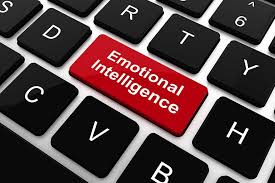ASSESSMENT INFORMATION FOR STUDENTS
Throughout your training we are committed to your learning by providing a training and assessment framework that ensures the knowledge gained through training is translated into practical on the job improvements.
BSBLDR511 Develop & Use Emotional Intelligence Assignment-Mentor Education Australia.

You are going to be assessed for:
- Your skills and knowledge using written and observation activities that apply to the workplace.
- Your ability to apply your learning.
- Your ability to recognise common principles and actively use these on the job.
All of your assessment and training is provided as a positive learning tool. Your assessor will guide your learning and provide feedback on your responses to the assessment materials until you have been deemed competent in this unit.
HOW YOU WILL BE ASSESSED
The process we follow is known as competency-based assessment. This means that evidence of your current skills and knowledge will be measured against national standards of best practice, not against the learning you have undertaken either recently or in the past. Some of the assessment will be concerned with how you apply your skills and knowledge in the workplace, and some in the training room as required by each unit.
The assessment tasks have been designed to enable you to demonstrate the required skills and knowledge and produce the critical evidence to successfully demonstrate competency at the required standard.Your assessor will ensure that you are ready for assessment and will explain the assessment process. Your assessment tasks will outline the evidence to be collected and how it will be collected, for example; a written activity, case study, or demonstration and observation.
The assessor will also have determined if you have any special needs to be considered during assessment. Changes can be made to the way assessment is undertaken to account for special needs and this is called making Reasonable Adjustment.
What if I believe I am already competent before training?
If you believe you already have the knowledge and skills to be able to demonstrate competence in this unit, speak with your trainer, as you may be able to apply for Recognition competence in this unit, speak with your trainer, as you may be able to apply for Recognition of Prior Learning (RPL).
Assessor Responsibilities
Assessors need to be aware of their responsibilities and carry them out appropriately. To do this they need to:
- Ensure that participants are assessed fairly based on the outcome of the language, literacy and numeracy review completed at enrolment.
- Ensure that all documentation is signed by the student, trainer, workplace supervisor and assessor when units and certificates are complete, to ensure that there is no follow-up required from an administration perspective.
- Ensure that their own qualifications are current.
- When required, request the manager or supervisor to determine that the student is ‘satisfactorily’ demonstrating the requirements for each unit. ‘Satisfactorily’ means consistently meeting the standard expected from an experienced operator.
- When required, ensure supervisors and students sign off on third party assessment forms or third-party report.
- Follow the recommendations from moderation and validation meetings.
How should I format my assessments?
Your assessments should be typed in a 11 or 12 size font for ease of reading. You must include a footer on each page with the student name, unit code and date. Your assessment needs to be submitted as a hard copy or electronic copy as requested by your trainer.
How long should my answers be?
The length of your answers will be guided by the description in each assessment, for example:

How should I reference the sources of information I use in my assessments?
Include a reference list at the end of your work on a separate page. You should reference the sources you have used in your assessments in the Harvard Style. For example: Website Name – Page or Document Name, Retrieved insert the date. Web page link.
For a book: Author surname, author initial Year of publication, Title of book, Publisher, City, State
ASSESSMENT GUIDE
The following table shows you how to achieve a satisfactory result against the criteria for each type of assessment task. The following is a list of general assessment methods that can be used in assessing a unit of competency. Check your assessment tasks to identify the ones used in this unit of competency.


PROJECT
INSTRUCTIONS
You will need to research information to assist with your responses for this task.
What you will need to complete this task
- Research materials such as books, internet, magazines, workplace documentation etc.
- Videos in your learning modules
- Learner Guide and Topic Presentations
- Access to legislative and regulatory documentation relevant to own state or territory.
You should use a variety of sources to gather information including training resources, workplace policies and procedures (if you are able to access these) and government and industry bodies. For this project you will undertake a range of tasks to:
- conduct an analysis to identify own emotional strengths, weaknesses, stressors, emotional states and triggers, incorporating feedback from others
- identify workplace situations and environments that may trigger an emotional response
- model behaviours that demonstrate management of emotions
- recognise the impact that cultural behaviours and beliefs may have on workplace interactions
- recognise and respond to the emotional states of others
- use emotional intelligence of self and others to enhance team performance
- promote the development of emotional intelligence in others.
Word Limits
Provide a brief report for each of the tasks below.

The following tasks may be completed as a workplace project based on your current role within an organisation, as a simulated workplace project based on a fictitious organisation, or an organisation you’re familiar with.
For this assessment you will need to perform the following tasks:
Task 1: Research and Action
– Profile two people in your workplace and provide a written response to the following:
1.Identify their emotional strengths and weakness.
2.How do you deal with these people?
3.How you could you assist them to develop emotional intelligence?
4.How you could you utilise your emotional intelligence to maximise a team’s outcome
Task 2: Research – Research and Provide a written response to the following:
How you can improve your emotional intelligence to combat the impact on colleagues and clients. This should include a discussion on:
a.How you respond to the emotional state of colleagues
b.How culture influences people’s reactions to different situations
c.How you would deal with others who became emotional in the workplace
Task 3: Identify and Discuss– Discuss how you can improve your emotional intelligence to combat the impact your emotions on colleagues and clients. Include in your discussion one example of how you would do this in the workplace. Your response will identify:
a.Identifying your strengths and weaknesses in relation work
b.Identifying the things that stress you at work and impact on your ability to work
c.Identifying the behaviours that you display that encourage others to behave appropriately at work
d.Include a self-reflection and feedback from others and discuss how you could improve your emotional intelligence for work
Task 4: Research and Report – Complete a written response to the following:
1.Explain emotional intelligence principles and strategies
2.Describe the relationship between emotionally effective people and the attainment of business objectives.
3.Explain how to communicate with a diverse workforce which has varying cultural expressions of emotion.
4.Explain the use of emotional intelligence in the context of building workplace relationships
PROJECT CHECKLIST


SHORT ANSWER QUESTIONS
INSTRUCTIONS
Answer the questions below by writing in the space provided. If you require more space, use a blank sheet of paper. Alternatively, you may like to use Microsoft Word and print out your answers to each question.
Answer the following questions in writing.
What you will need
1.Research materials such as books, internet, magazines, workplace documentation etc.
2.Access to legislative and regulatory documentation
3.Your Learner Guide for this unit of competence
4.Your text for this unit
Word Limit

1.List at least 5 examples of emotional strengths and weaknesses
What are the five major stressors that affect people’s emotional states?
What methods could be used to develop awareness of your own emotional triggers, so you are able to use this awareness to enable control emotional responses
Outline a workplace behaviour suitable to model that demonstrated management of emotions
What information should you identify and use to improve the development of your
own emotional intelligence?
BSBLDR511 Develop & Use Emotional Intelligence Assignment-Mentor Education Australia.

Identify at least three examples of emotional states you might identify in co- workers in the workplace, and outline the common cues for each
Why is it essential to consider varying cultural expressions of emotions when working and responding to emotional cues in a diverse workforce?
What can you do to demonstrate flexibility and adaptability when dealing with others?
Why should you taken other people’s emotions into account when you are making decisions?
There are a variety of opportunities you may provide in your workplace for others to express their thoughts and feelings. List two
11.Why is it important to assist others to understand the effect of their behaviour and emotions on others in the workplace?
BSBLDR511 Develop & Use Emotional Intelligence Assignment-Mentor Education Australia.
Discuss the importance of the self-management of emotions
13.What can you do in the workplace to encourage others to develop their own emotional intelligence, so they can build productive relationships and maximise workplace outcomes?
Why should you encourage a positive emotional climate in the workplace?
14.What information will you need to consider to ensure you use the strengths of work group members to achieve workplace outcomes?
SHORT ANSWER QUESTIONS CHECKLIST


BSBLDR511 Develop & Use Emotional Intelligence Assignment-Mentor Education Australia.



